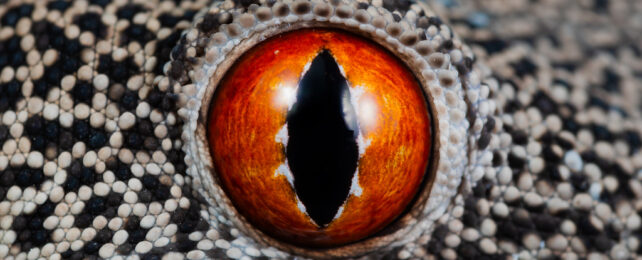The evolution of the human eye has long been considered one of biology's more challenging mysteries, drawing debate over the sequence of steps required to turn rudimentary sensitivity to light into a complex photographic system.
New research suggests some components of vertebrate vision may not have been shaped incrementally as their genes passed down family lines, but were 'stolen' from entirely different branches of life.
"At least one innovation that led to the current structure of vertebrate eyes did not occur from stepwise "tinkering" with genes that exist in other animals, but came from introduction of novel DNA from bacteria by horizontal gene transfer," explains molecular biologist Matt Daugherty from the University of California, San Diego (UCSD) on Twitter.
Horizontal gene transfer describes the process of genetic material moving between different types of organisms, such as through gene-swapping viruses or thieving bacteria.
One of the key features that distinguishes our precision-focus, camera-like eyes from those of invertebrates is the separation of light-sensing tissues from the cells responsible for recycling their light-reactive molecules.
It’s worth noting that invertebrates also have amazing eyes so have obviously evolved different solutions for visual acuity. We just rely on IRBP and they do not, meaning acquisition of this bacterial gene set us down an evolutionary path that makes our eye what it is. 7/
— Matt Daugherty (@Daugherty_Lab) April 10, 2023
This relies on mechanisms for actually moving the molecules, called retinoids, between the different cells. The highly conserved protein interphotoreceptor retinoid-binding protein (IRBP) does the transportation, and according to this new research, it arose from a bacterial gene that suddenly appeared in vertebrate-like eyes over 500 million years ago.
Not only is IRBP absent in invertebrates, it isn't found in any other complex cell either, from trees to amoeba to yeast. The only record we have of a gene sequence similar to the one that codes for IRBP is from bacteria.
Analyzing over 900 genomes, Massachusetts Institute of Technology molecular biology graduate student Chinmay Kalluraya and colleagues were able to pinpoint the gene's appearance in vertebrate lineages. It coincided with the appearance of vertebrate-like eyes over 500 million years ago.
It seems that the ancestor of all back-boned animals stole the original gene from bacteria, and over many generations of natural selection, duplicated its code and shaped its function for retinoid transport.
Althought it plays just one small part in vertebrate vision, the fact novel components can slide between entirely different parts of the biosphere presents new possibilities for explaining many complex biological processes. One other example of this is a protein necessary for placenta formation in mammals called syncytin. This protein's gene originated in retroviruses.
"Unlike evolution of existing genes, or the so-called tinkering, acquisition of foreign genetic material has the potential to punctuate eukaryotic evolution by providing immediate functional novelty," the team explains in their paper.
As more genomes are sequenced, the researchers suspect we will find even more examples of horizontal gene transfer in our evolutionary history.
"DNA from microbes (including viruses) has shaped animal evolution in strange and surprising ways," says Daugherty.
This research was published in PNAS.
